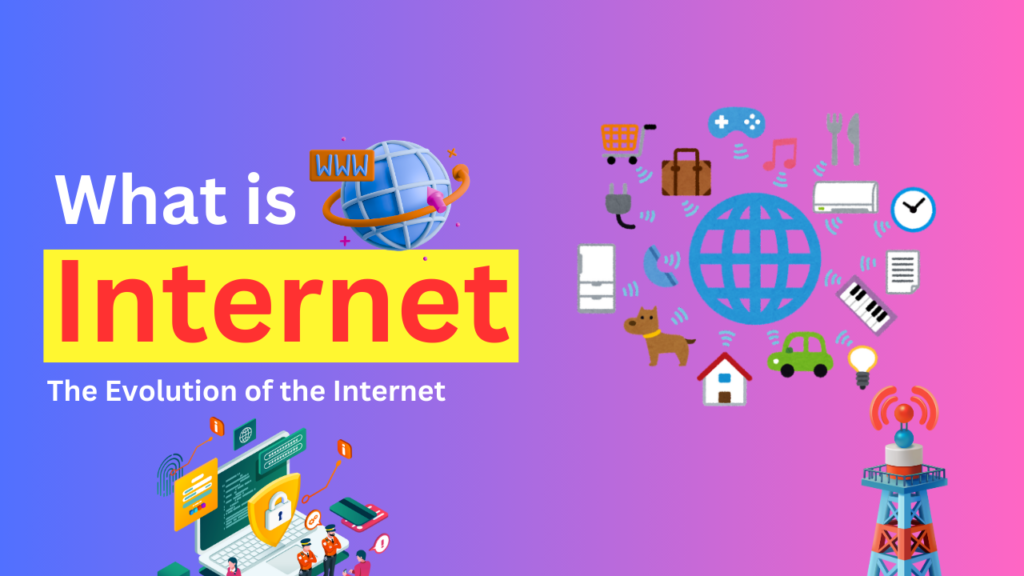The internet has transformed our world in ways that were once unimaginable. From its beginnings as a military project to its current status as a global platform for communication, commerce, and entertainment, the evolution of the internet is a remarkable story. This article explores the key milestones in this evolution, tracing its journey from ARPANET to the emerging Web 3.0.
The Birth of the Internet: ARPANET
The Origins in the 1960s
The journey of the internet began in the late 1960s with the development of ARPANET. Funded by the U.S. Department of Defense, ARPANET aimed to facilitate communication between research institutions. The first successful message was sent over ARPANET in 1969, marking a significant milestone in digital communication. This network laid the groundwork for what would eventually become the internet.
Early Protocols and Innovations
In the early 1970s, key innovations such as packet switching were developed. Packet switching allowed data to be broken into smaller packets and transmitted across the network, improving efficiency and reliability. The introduction of the Transmission Control Protocol/Internet Protocol (TCP/IP) in the late 1970s standardized communication across networks, setting the stage for future internet growth.
The Rise of the World Wide Web
The Launch of the World Wide Web
The early 1990s saw the birth of the World Wide Web, a system that made the internet more accessible to the general public. Tim Berners-Lee developed the first web browser, which allowed users to navigate web pages easily. The introduction of hyperlinks and multimedia content transformed how information was shared and consumed online.
Commercialization and the Dot-Com Boom
By the mid-1990s, the internet began to attract commercial interest. Businesses recognized the potential of the web as a marketing tool and a sales platform. This commercialization led to the dot-com boom, where numerous internet-based companies emerged, including Amazon and eBay. The rapid growth of the internet during this period significantly changed the global economy.
The Era of Social Media and User-Generated Content
The Emergence of Social Media Platforms
The early 2000s marked the rise of social media platforms, which fundamentally changed how people interacted online. Websites like Facebook, Twitter, and YouTube allowed users to create and share content, fostering a sense of community and connectivity. This shift towards user-generated content empowered individuals to express themselves and engage with others on a global scale.
The Impact of Mobile Technology
The advent of smartphones further accelerated the evolution of the internet. Mobile technology made it possible for users to access the internet anytime, anywhere. Apps became integral to the online experience, allowing for instant communication, entertainment, and commerce. This mobile revolution has shaped how we interact with the internet today.
The Transition to Web 2.0
Characteristics of Web 2.0
Web 2.0, a term popularized in the early 2000s, represents a shift from static web pages to dynamic, interactive content. This era emphasized collaboration, social networking, and user participation. Websites became platforms for sharing information and experiences, with features like blogs, wikis, and social networking sites taking center stage.
The Rise of Big Data and Analytics
As user-generated content exploded, so did the importance of data. Companies began leveraging big data and analytics to understand consumer behavior and preferences better. This data-driven approach allowed businesses to personalize marketing efforts and enhance user experiences, further solidifying the role of the internet in daily life.
The Age of E-Commerce and Digital Transformation
The Growth of E-Commerce
E-commerce has become a dominant force in the global economy, driven by advancements in internet technology. Online shopping platforms like Amazon and Alibaba have revolutionized retail, offering consumers convenience and variety. The COVID-19 pandemic accelerated this trend, with more people turning to online shopping than ever before.
Digital Transformation Across Industries
Digital transformation has affected nearly every industry, from healthcare to education. Organizations have embraced digital tools to improve efficiency, enhance customer experiences, and adapt to changing market demands. The internet has become a catalyst for innovation, reshaping business models and operational strategies.
The Emerging Landscape of Web 3.0
Understanding Web 3.0
As we move towards Web 3.0, the internet is set to undergo another significant transformation. Often referred to as the “semantic web,” Web 3.0 aims to create a more intelligent and interconnected online experience. This evolution emphasizes the use of artificial intelligence, machine learning, and decentralized technologies to enhance user interactions.
Decentralization and Blockchain Technology
A defining feature of Web 3.0 is decentralization. Unlike previous iterations of the internet, where data is stored on centralized servers, Web 3.0 leverages blockchain technology to distribute data across a network. This decentralization increases security, transparency, and user control over personal data, addressing some of the privacy concerns associated with earlier internet models.
The Future of the Internet
Anticipating New Innovations
As technology continues to advance, the future of the internet holds exciting possibilities. Innovations in augmented reality (AR), virtual reality (VR), and the Internet of Things (IoT) will further expand the ways we interact with the digital world. These technologies promise to create immersive experiences that blend the physical and virtual realms.
The Importance of Ethical Considerations
With the evolution of the internet, ethical considerations surrounding privacy, security, and data ownership have become increasingly important. As we navigate the future, it is essential to prioritize ethical practices that protect user rights and foster trust in digital interactions.
Conclusion: A Journey of Transformation
The evolution of the internet from ARPANET to Web 3.0 showcases a remarkable journey of technological advancement and societal change. Each phase has brought new opportunities and challenges, shaping how we communicate, work, and live. As we look ahead, understanding this evolution will be crucial in navigating the complexities of the digital age.
The internet continues to evolve, promising an exciting future filled with innovations that will further transform our world. By embracing these changes and prioritizing ethical considerations, we can ensure that the internet remains a powerful force for good in society.
